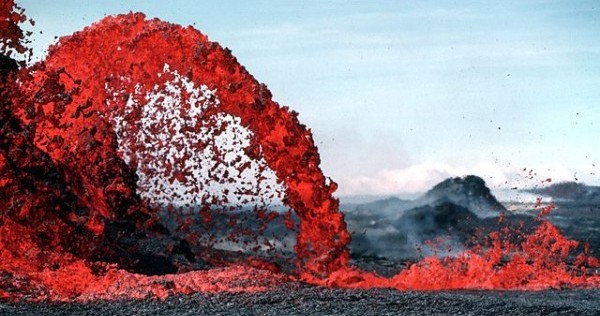
I regret the daily, even hourly, use of awesome! to express mild approval, when the antiquated Neat! or Dig it! or the still cool Cool! are hyperbole enough to high-five the fact that we will meet later for a beer or that you have, after much ado, unclogged the sink drain. Because if these minor miracles are awesome!, then what remains to us to express actual awe?
Awe meaning dread mixed with veneration. Awe meaning “solemn and reverential wonder, tinged with … fear, inspired by what is … sublime and majestic in nature,” according to the OED.
Toba.
Toba was the largest volcanic explosion of the past two million years. Toba Volcano blew 74,000 years ago.
Mount Toba rose up where Lake Toba now lies, in northern Sumatra, in Indonesia. The lake is 50 miles long and 15 miles wide. It covers some 700 square miles and reaches a depth of more than 1,700 feet. The cliff-sided lake is Toba’s caldera. A caldera is the cavity that forms when megatons of magma blast out of a mountain’s magma chamber, leaving an empty interior. With nothing to hold it up, the mountain collapses.
How big was Toba? Of devastating volcanic events, the most famous no doubt is Krakatau (or Krakatoa), also in Indonesia. On August 27, 1883, after weeks of minor booms and quakes, Krakatau blew. Some 40,000 people were killed, mostly by the resulting tsunami. The booms were heard as far away as central Australia. Smoke, fire, ash, and pumice rose to a height of nearly 25 miles. The volcano emitted tons of sulfur dioxide, which combined with hydrogen in the stratosphere to make drops of sulfuric acid. Veils of sulfuric acid reflected sunlight back to the sun and over the next weeks and months, the earth’s temperature dropped by several degrees.
Volcanologists measure volcanic eruptions by their VEI—Volcanic Explosivity Index. Each rise of the VEI, say from 1 to 2, indicates a tenfold increase in the power of the explosion. Krakatau’s VEI was 6. Toba’s was 8. Using a different measure, Krakatau spewed three cubic miles of boiling lava, ash, sulfuric acid, and hot rock into the atmosphere. Toba spewed 670 cubic miles of the earth’s insides into the atmosphere. At the time Toba blew, the world was already cooling. Toba accelerated this cooling into a severe ice age, its refrigerator effect due most likely to sulfur-rich gasses hanging in the atmosphere for years, reflecting sunlight back into space. Toba’s pyroclastic flows covered more than 7,000 square miles. Near the vents, ash deposits mounted to 2,000 feet. Thick ashfall covered Southeast Asia and the entire Indian subcontinent.
Famines followed. Extinctions of plants and animals followed. Among the animals that starved were likely some of us. Some researchers think that Toba reduced the numbers of Homo sapiens to groups in South Africa, creating a bottleneck of survivors from whom all of us today descend. Undoubtedly the cold snap severely affected our distant cousins, the Neandertals, who lived farther north.
Toba makes Krakatoa look timid. Toba defines colossal, calamitous, catastrophic. The technical term volcanologists use to describe Toba is humungous.
Yes. Toba was humungous. It was fearful. It was awesome.

